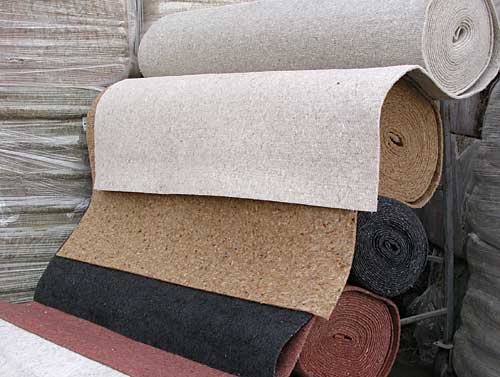New Standard Assures Sustainability in Carpets
Reclamation and end-of-life management (possible
25 points)
Any holistic approach to sustainability must incorporate end of life considerations. This category encourages product reuse, recycling and reclamation, thereby reducing waste to landfills and incineration. It requires extended life of the system including proper installation and maintenance. A manufacturer or supplier shall have its
own materials management system or demonstrate financial or
contractual instruments whereby it takes materials that start
as carpet and are reclaimed and/or recycled. This category accounts for recycling materials from their highest to lowest use after production and prior to final disposition, encouraging reuse and avoiding disposal.
Â
Â
|
Â
This category helps further CARE goals and documents carpet reclamation over the supply chain, avoiding land filling and incineration.
- Prerequisites (three points total; one prerequisite points; two platinum prerequisite point). As a prerequisite, the manufacturer must describe where operational reclamation opportunities exist (one point earned). As a Platinum level prerequisite, carpet must be installed using CRI Carpet Installation Standard 104 and/or manufacturers' recommended procedures and is awarded one point. For 2007, 10 percent reclamation and recycling is a prerequisite for Platinum/EPP, consistent with CARE goals and is awarded one point. Check CARE website for subsequent years' goals.
Beyond the prerequisites, up to 17 additional points are awarded for various levels of product reclamation. Manufacturers who show an 80 percent reclamation rate calculated according to a proscribed formula receive the full 17 points.
A manufacturer shall earn two points by documenting that the materials management system takes materials that start as carpet and reclaims them into secondary non-carpet materials. A manufacturer shall earn up to two points by reclaiming secondary materials into the same product system from which they originated. And the manufacturer shall earn two points by taking back materials that start as carpet and are reclaimed and repurposed/refurbished/ reused as equivalent carpet products.
Post−consumer recycled content is defined as a material or finished product that has served its intended use and has been diverted or recovered from waste destined for disposal. Post- industrial/pre consumer recycled content are materials generated by manufacturers or product converters, such as trimming, overruns, and obsolete products that are incorporated back into the manufacturing process of the same or a different product.
Innovation Credits (Possible 10 points)
NSF140-2007 provides manufacturers the opportunity to be awarded points for exceptional performance above the requirements set
by the Sustainable Carpet Assessment Standard and/or innovative performance not specifically addressed by the Sustainable Carpet Assessment Standard.
Innovation credits shall be applied for and submitted by applicants to address topics that will further the promotion of sustainable carpet. A maximum of 10 points shall be awarded for any innovation credits.
For instance, innovation points can be earned for design innovations that achieve dematerialization, or using less material by percent, or weight per square foot-an accomplishment that means reduced impacts over the life cycle of the product. Says Peoples, "A company may find a way to reduce the energy used to make a square yard of carpet by 50 percent. That would represent a breakthrough and some new technology. So you give a point for innovation. Or a company finds a way to eliminate the filler-30 percent by weight of a broadloom carpet. Today this filler is strip mined from the earth and has little or no recycle value, so you reward them for dematerialization with a point."
Other industry advances have ranged from eliminating the need for adhesives and floor underlayments to renewing old carpet tiles to reclaiming Nylon 6. "This standard allows credit for breakthroughs and challenges the industry to continue to innovate," says Gregory.
The Impact of NSF140-2007
As a cutting-edge standard that is serving as a model for other industries, NSF140-2007 will simplify the procurement process for green carpet. As potential specifiers of virtually everything that goes into a building, architects, and designers have the opportunity to use the Standard not only to help educate clients, but to reduce the environmental footprint of their projects. Because it is built on credible science and a consensus process, the Standard will make it easier for users to identify certified carpets with a lower environmental impact, and go a far distance in benefiting users-as well as all organizations involved in the supply chain-in terms of LEED Credits (EQ c4.3, MR c4, ID c1), design innovation, product differentiation, long-term customer relationships, product innovation, improved indoor air quality and lower emissions, reduced liability, ecological restoration, enhanced health and safety for workers and consumers, and measurable reductions in total environmental impact.
"NSF140-2007 is a holistic standard," says Steve Bradfield, Corporate Director of Environmental Affairs for Shaw Industries, Dalton, Georgia, a manufacturer of a wide variety of flooring. "But is it perfect? Is the balance correct? It may take a couple of iterations to get it right. Conditions will change. As climate change increases, specifiers will be asking more questions about emissions factors and we may give that consideration more weight.









